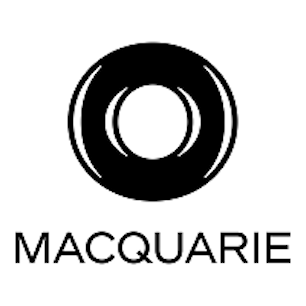Income is harder to find — this ETF offers a fresh solution for retail investors
Please note this interview was filmed on 18 March 2025.
- Name of the fund and ASX ticker: Macquarie Subordinated Debt Active ETF (ASX: MQSD)
- Asset Class: Fixed income
- Investment objective: Provides exposure to a diversified portfolio of subordinated bonds, which may offer higher levels of yield than cash or other investment grade bonds.
- Fund Page: VIEW LINK
As listed bank hybrids gradually mature and are no longer being replaced under APRA’s updated capital rules, a growing gap is emerging for investors seeking sustainable income without taking on excessive risk.
Macquarie Asset Management has stepped in with the launch of the Macquarie Subordinated Debt Active ETF (ASX: ASX: MQSD) — a listed vehicle providing access to a part of the capital structure traditionally reserved for institutions: subordinated debt, particularly from banks.
“We think we have the ability to help some of those investors looking to replace hybrids by offering subordinated debt exposure in an active ETF,” says Blair Hannon, Head of ETFs, ANZ, at Macquarie Asset Management.
Why subordinated debt, and why now?
The withdrawal of hybrids from the ASX — driven by regulatory changes from APRA that phase out listed bank hybrids by 2032 — has created a growing challenge for income-focused investors. As these securities mature or are repaid early by the issuer, capital is returned to investors, and decisions must be made about where to reallocate.
“When this catalyst happens and the money comes back to many investors' bank accounts, they need to think about where that money is going to go. Subordinated debt is one option," Hannon explains.
He adds that investor behaviour has evolved over the past 5–7 years, with many shifting from broad fixed income exposure to more targeted, specialised allocations.
“Investors have become more astute around fixed income investing. They’ve become more comfortable exploring higher yielding, more targeted parts of the market," he says.
How MQSD works: Income, credit, and structure
.jpg)
MQSD is a listed, actively managed portfolio that invests in institutional-grade subordinated debt, with a strong focus on the banking sector. It currently has a running yield of 6.3%, and aims to pay monthly income*.
"It’s a majority bank-focused investment, which is something many investors are inherently familiar with. It aims to provide monthly income, which we know is really important for investors seeking consistency of income," Hannon says.
While hybrids were easy to buy on the stock exchange, subordinated debt is typically issued to institutional buyers — making access difficult for retail investors. MQSD bridges this gap by delivering that exposure through an ETF structure, charging 0.29% p.a. in management fees.
“ETFs are listed, so they work in the same realm as hybrids did. Whilst not a like-for-like replacement, it’s potentially something investors may want to look at,” he says.
Why active management matters in fixed income
Although ETFs are often associated with passive investing, Hannon makes the case that active management is essential in fixed income, especially in more complex areas like subordinated debt.
“As a fixed income investor, you’re lending someone money. Would you do that without questioning who they are or what they do?” he says.
Macquarie’s fixed income team manages approximately $180 billion globally, supported by 38 credit analysts dedicated to assessing the quality and repayment ability of issuers — a level of scrutiny that passive products can’t match. In index-based strategies, capital is allocated blindly across all holdings, without regard for creditworthiness.
“But if the credit environment worsens, an active investor can shift to higher-quality credit or increase liquidity. That’s not something passive strategies can do.”
Managing risk in practice
Risk isn’t just part of the process — it’s the starting point for the MQSD portfolio.
“A vital part of the portfolio management process is around managing risk," Hannon says.
Macquarie’s team takes a proactive approach, adjusting credit exposures and improving liquidity in response to changing conditions. That includes front-foot decisions like reducing lower-rated credit or increasing defensive positioning if the credit environment deteriorates.
"If you are investing in a defensive part of the portfolio, you would want some level of risk mitigation, some level of scrutiny ... some hands on the wheel. So it makes sense that having that level of active management," he says.
Sub debt, hybrids, and the broader toolkit
While not like-for-like, MQSD may be one of the closest replacement for hybrids, and for investors reallocating maturing capital, it offers an alternative with the potential for attractive yield and relatively lower risk, with the transparency of an ETF structure.
“This is not the be-all and end-all for investors but it’s one option in the broader fixed income toolkit," Hannon says.

Introducing new Macquarie fixed income active ETFs
To address the needs of investors, the Macquarie Fixed Income team have added to their growing suite of ASX-traded solutions. Fixed income active ETFs can offer attractive alternatives to hybrid securities, ensuring investors can maintain their defensive exposure with confidence.
3 topics
1 stock mentioned
1 fund mentioned


